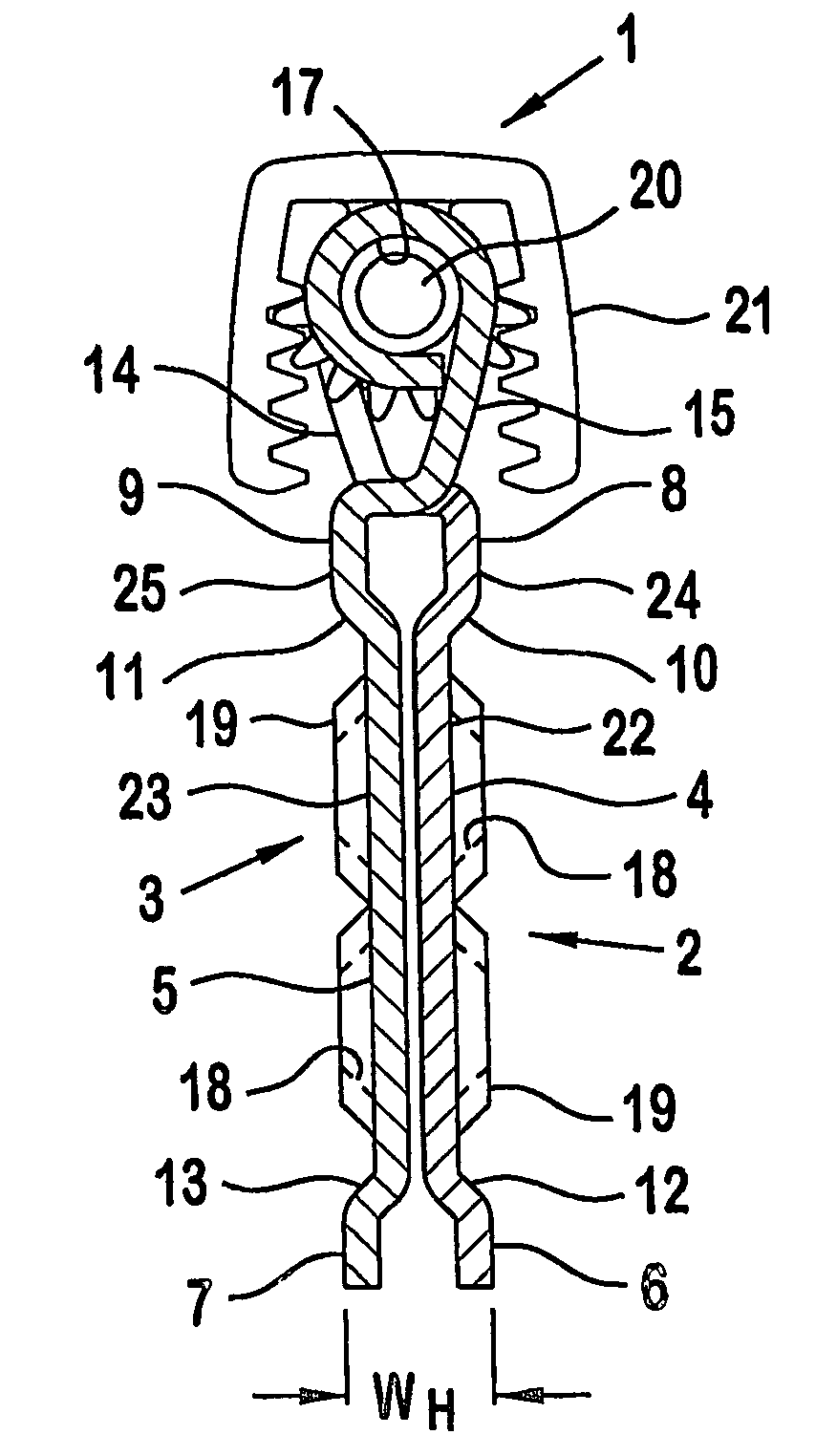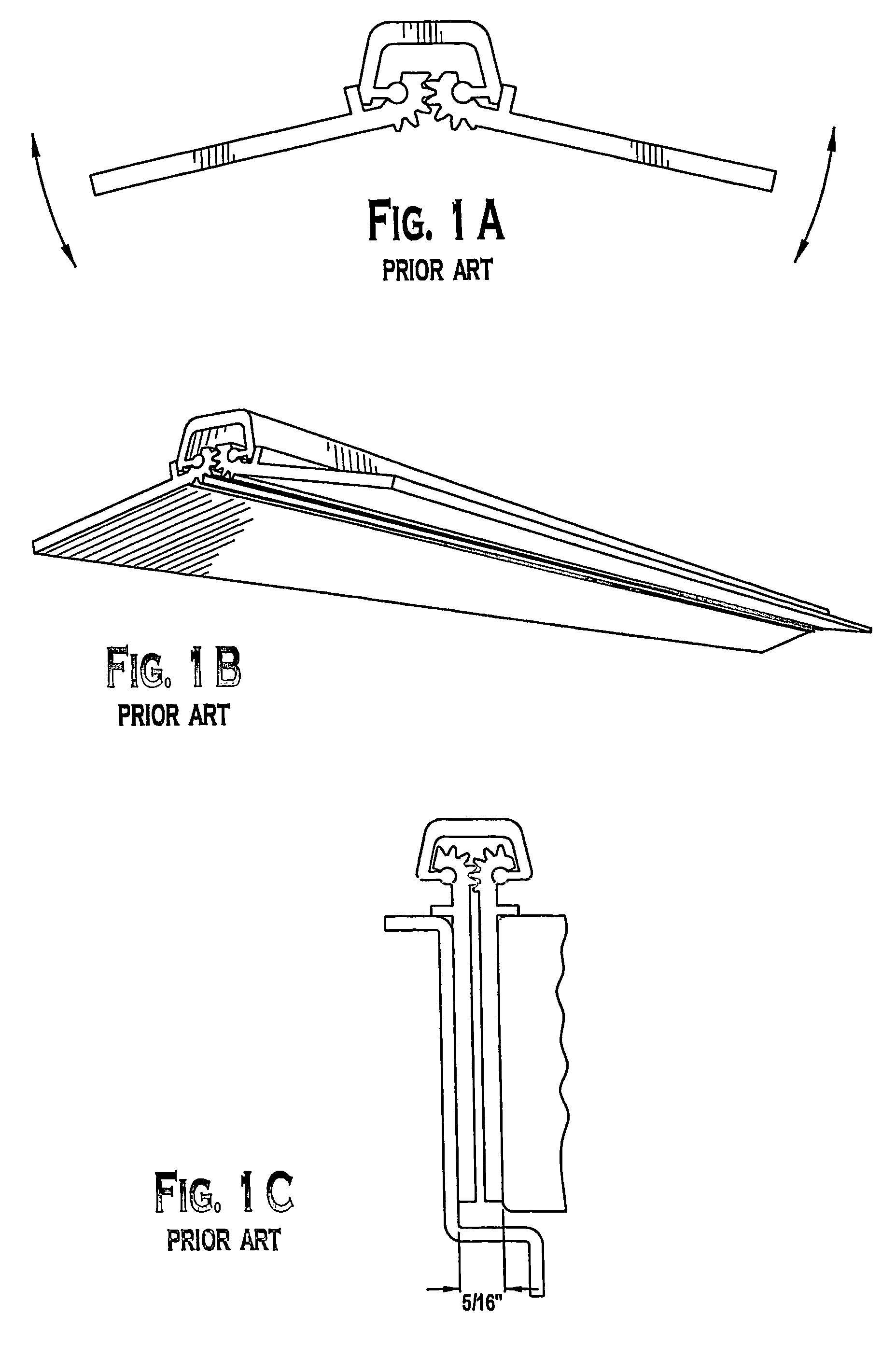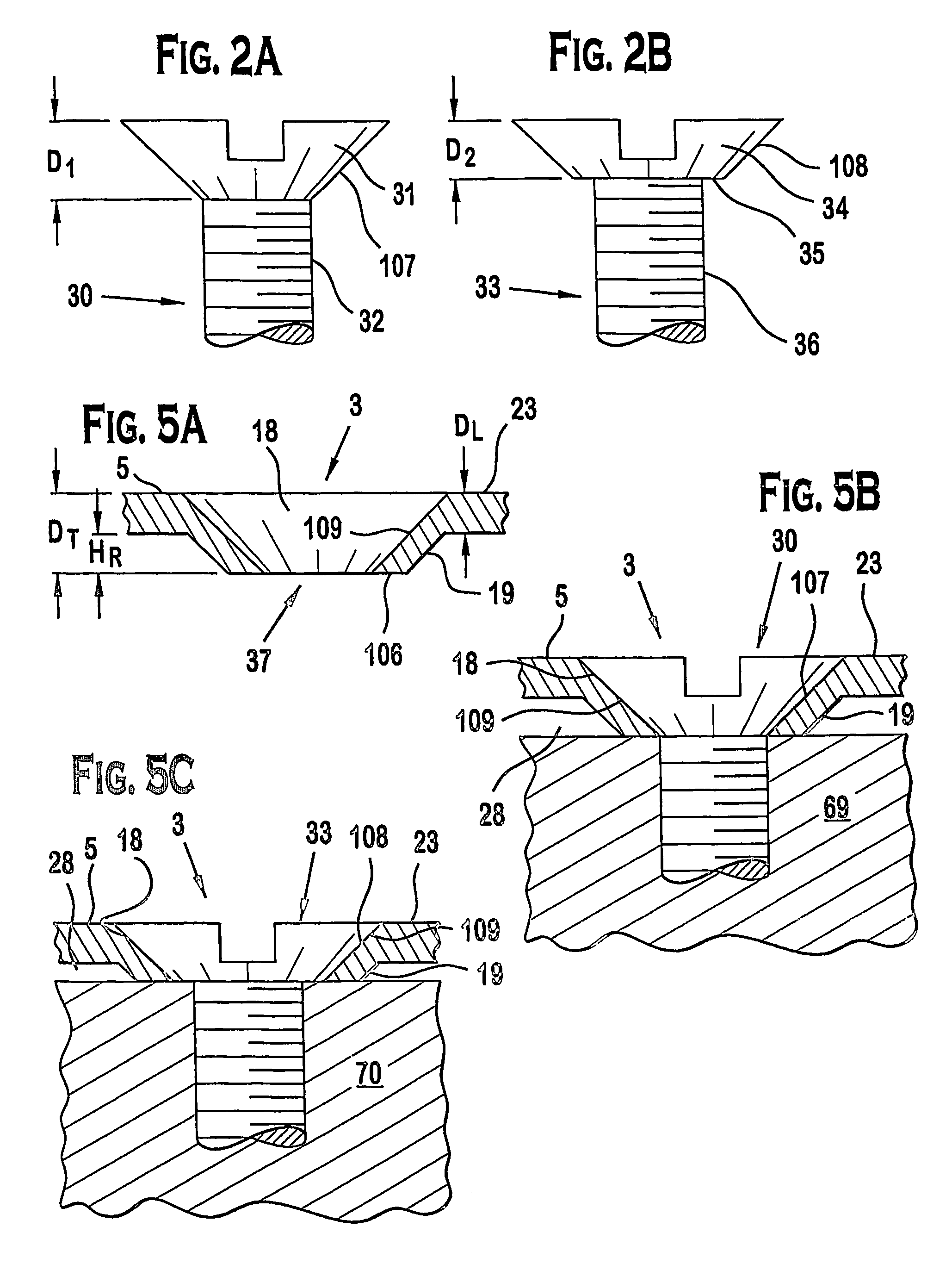These flat hinge leaves, however, may lack sufficient strength and are prone to warpage and damage when made of relatively thin material, such as
sheet steel.
Due to the thinness of the material, they also may not be
usable with standard fasteners used in the door hinge industry, such as No. 12 flat top, conical head self-tapping screws (either full or
undercut head designs), and require special fasteners or modification of standard fastener offerings.
However, because of the variety of materials and processes used in their fabrication, together with their widespread availability from different sources, little attention has been given to interchangeability from one manufacturer's offerings to another, or between different choices of hinge leaf material such as aluminum or steel.
As is apparent, if a steel hinge having thinner leaves is desired to be substituted for the aluminum hinge, there is insufficient leaf thickness to fill the standard 5 / 16 inch gap, requiring costly and inconvenient door and / or frame modifications.
Even though the thinner leaves could be set wider apart by forming the knuckles to create a wider separation between them when the leaves are parallel, this would leave a large gap between them, which is undesirable because it would allow excessive air infiltration as well as permit warping and large distortions of the leaves under conditions of building fires in which steel hinges are principally intended.
Differences in resistance to the effects of fire and other operational hazards between continuous hinges that may be manufactured of different materials has made it difficult to exchange or replace hinges with others more suitable for a particular location in a building or for a different operating requirement.
The consequences of upfront errors by architects and designers that may occur in the specification of a particular hinge for a particular door
assembly in new
building construction or retrofit applications may be also be severe.
Frequently, the hinge specification must be changed during the construction sequence, because different hinge materials may be required for compliance with fire or other complex regulations, or must be changed during the useful life of the building because various building codes may be changed, or because the building may be used for subsequent, unanticipated purposes which require such changes.
As can be appreciated, continuous hinges which vary in thickness simply because of their materials of construction can create costly delays in the construction sequence and costly replacements of improperly sized frames and
doors when errors in specification occur.
Current thin leaf hinges that are commercially available offer no such comparable interchangeability, resulting in the costly substitution of a new door and / or frame to meet the clearance requirements of alternate hinging systems.
Another difficulty arises in the fastening of continuous hinges to their
doors and frames.
Undercut flat head screws, while useful for reducing the required depth of the
countersink in hinges and similar hardware items,
restrict the strength of the attachment, particularly if the head thickness is reduced too much.
If the head of the screw is too large in
diameter in relation to its thickness and the
body size of the screw, it could be so weak as to break in normal service, and it might be too thin to accept standard screwdriver tips commonly used with conventional screw driving tools that cooperate with the recess formed in the
screw head.
If the screw heads are made the slightest bit thicker than the gauge of the hinge leaves, the
screw head will “bottom” against the door or frame material before the leaf is forced and held tight against its supporting surface, resulting in a loose and weak hinge installation.
With steel hinges made of relatively thin-gauge fabricated sheet
metal, however, these standard fastener offerings are often unsuitable having screw heads that exceed the thickness of the hinge leaf material by an unacceptable tolerance.
Thus screw heads must be severely
undercut for use with the thin-gauge steel hinges, thereby weakening them.
However, this sacrifices
shear strength and holding power, because unlike mortise or butt hinges which rely on the door and frame cutouts for door support, doors hung with continuous hinges must rely primarily on the strength of the screws alone to support the weight of the door.
The handling and shipping of continuous hinges presents yet another problem.
Hinges fabricated of steel sheet
metal in long lengths are easily bowed, dented, and bent during their shipment, handling at the jobsite, or during installation.
Yet another
disadvantage of sheet metal hinges is difficulty in maintaining proper appearance after installation, because the screw tension at widely separated screw locations along the length of each hinge member distorts the material, producing highly visible
waviness and unsightly reflections in the finished installation.
This is particularly unacceptable for commercial installations.
Otherwise, only those types of screws which have a head that projects above the surface of the hinge leaf could be employed, making the installation both unsightly and producing a
wide gap between the hinges leaves in the closed position.
In other manufacturing techniques, a slightly beveled rim can be stamped around the edge of each hole, but the depth and conformity to the
screw head design is limited by the extremely high forces required in “coining” these edges and the durability of the forming punches to withstand the pressures needed to produce
metal flow within the material thickness of the leaves.
Moreover, these limits of press-formed conical shapes require that the initial hole be initially stamped to a much larger
diameter than the body or shank of the screw would normally otherwise require, because the limited ability of the metal to flow into a conical shape limits the bevel to the outer edges of the hole.
Flat head countersunk screws contact such screw holes around their outer edges only, creating hinge leaf screw pull-through problems when the leaf is being fastened to a hinged object and screw breakage because of the leverage effect between the outer edges of severely
undercut thin-headed screws and their sharp edged (
stress concentration notch) transition to the screw body.
 Login to View More
Login to View More  Login to View More
Login to View More 


